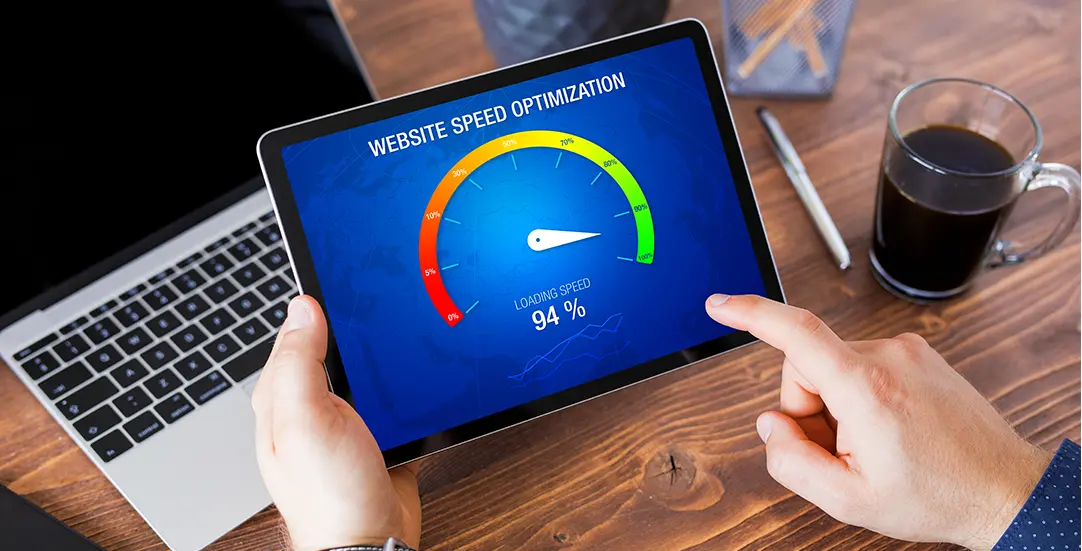In the digital age, a fast-loading website is essential for success. Research shows that users expect web pages to load in two seconds or less, and any delay can lead to increased bounce rates and lost conversions. A slow website not only frustrates visitors but also affects your search engine rankings. Therefore, increasing your website’s speed is crucial for improving user experience and boosting conversions. Here’s a comprehensive guide on how to achieve this.

Table of Contents
Toggle1. Optimize Images
Images often make up a significant portion of a website’s load time. To enhance speed:
- Compress Images: Use tools like TinyPNG or ImageOptim to reduce file sizes without sacrificing quality.
- Use Appropriate Formats: Choose the right file format for your images (JPEG for photos, PNG for graphics with transparency, and SVG for vector images).
- Implement Lazy Loading: This technique loads images only when they are about to enter the viewport, reducing initial load time.
2. Minify CSS, JavaScript, and HTML
Minifying code involves removing unnecessary characters (like spaces and comments) from your CSS, JavaScript, and HTML files. This reduces file sizes and accelerates loading times. Use tools like UglifyJS for JavaScript and CSSNano for CSS to automate this process.
3. Leverage Browser Caching
Browser caching allows web browsers to store static resources locally, so they don’t have to be re-downloaded each time a user visits your site. By setting appropriate cache headers, you can significantly reduce load times for repeat visitors. Tools like W3 Total Cache (for WordPress) can help manage caching settings easily.
4. Choose a Fast Hosting Provider
Your choice of web hosting plays a crucial role in site speed. Opt for a reputable hosting provider that offers fast servers and excellent uptime. Consider managed hosting solutions or VPS (Virtual Private Server) hosting for better performance. Additionally, using a content delivery network (CDN) can help distribute your content across multiple servers worldwide, improving load times for global users.
5. Reduce HTTP Requests
Each element on a web page (images, scripts, stylesheets) requires an HTTP request. Reducing these requests can speed up loading times:
- Combine Files: Merge multiple CSS and JavaScript files into single files to minimize requests.
- Use CSS Sprites: Combine multiple images into a single image sprite, reducing the number of requests needed to load them.
6. Enable Gzip Compression
Gzip compression reduces the size of your website files before sending them to the user’s browser, which can significantly enhance loading speeds. Most web servers support Gzip compression; you can enable it through your server settings or by using plugins for CMS platforms like WordPress.
7. Optimize Web Fonts
Web fonts can contribute to slow loading times. To enhance performance:
- Limit the Number of Fonts: Use a minimal number of fonts and styles to reduce load times.
- Choose Efficient Formats: Use modern font formats like WOFF2, which are optimized for performance.
- Implement Font Display Options: Use the
font-displayproperty in CSS to control how fonts are displayed while loading, which can improve perceived speed.
8. Regularly Audit Your Website
Conducting regular speed tests and audits is essential for maintaining optimal performance. Tools like Google PageSpeed Insights, GTmetrix, and Pingdom can help identify areas for improvement. Use these insights to make informed decisions about optimizations and monitor the impact of changes on your website’s speed.
9. Implement AMP (Accelerated Mobile Pages)
AMP is an open-source framework that allows developers to create fast-loading mobile web pages. By implementing AMP, you can provide a smoother experience for mobile users, potentially leading to increased conversions. AMP pages are designed to load quickly by streamlining HTML and limiting the use of JavaScript.
10. Streamline Your Checkout Process
For e-commerce websites, a slow checkout process can lead to cart abandonment. Optimize this experience by:
- Reducing Form Fields: Ask for only essential information during checkout to minimize friction.
- Offering Guest Checkout: Allow users to complete purchases without creating an account, which can speed up the process.
- Providing Multiple Payment Options: Integrate various payment methods to cater to different user preferences.
Conclusion
Increasing your website’s speed is not just a technical enhancement; it’s a crucial aspect of improving user experience and boosting conversions. By implementing the strategies outlined above—optimizing images, leveraging caching, choosing the right hosting provider, and regularly auditing your site—you can create a faster, more efficient website that attracts and retains visitors. In today’s competitive online landscape, a fast-loading site can be the difference between a potential customer clicking away or completing a purchase. Prioritize speed, and you’ll reap the rewards in higher conversions and improved user satisfaction.


No responses yet